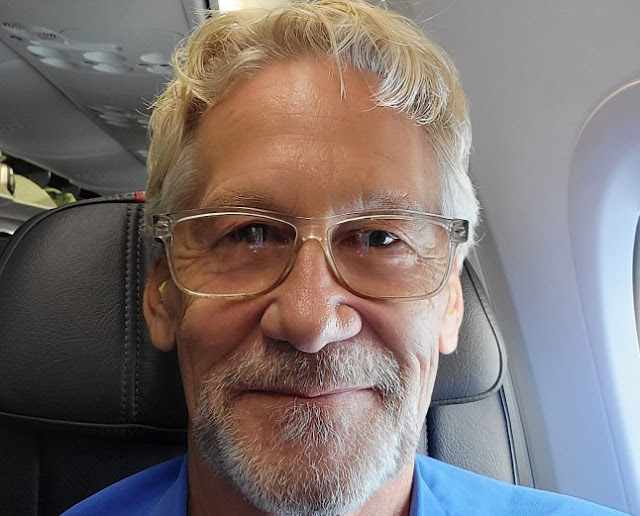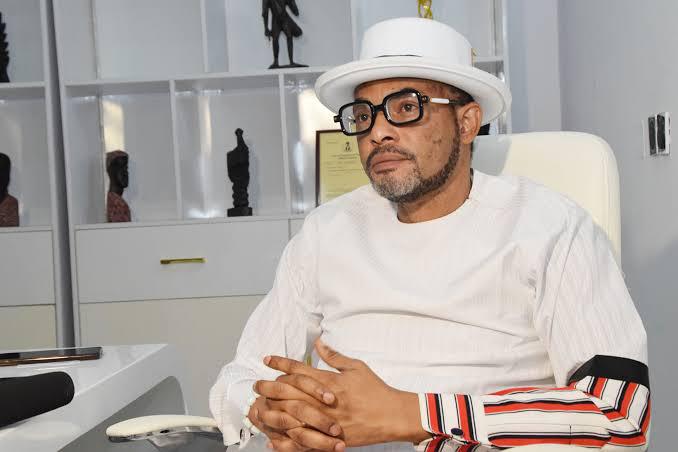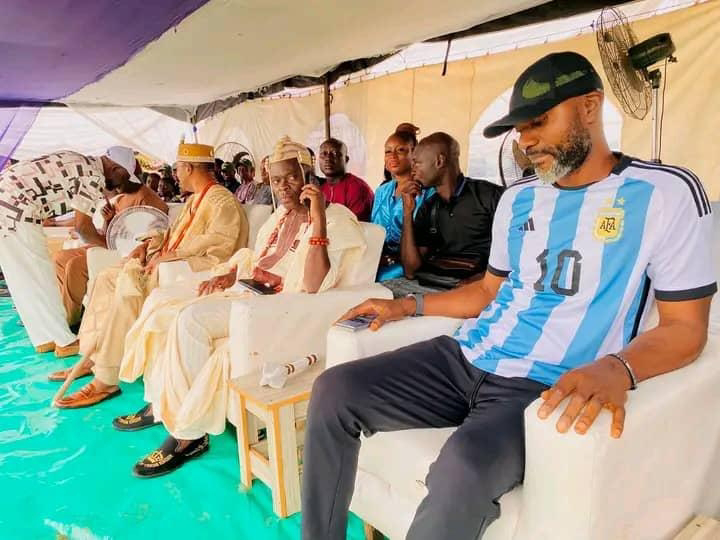In a remarkable and thought-provoking narrative, Dannion Brinkley, a 75-year-old former U.S. Marine from Nevada, has captivated audiences with his extraordinary claims of surviving not one, but three near-death experiences (NDEs).
According to Brinkley, these profound encounters with death have led him to a singular conclusion: “Nobody truly dies.” Once a staunch skeptic of the afterlife, Brinkley’s life-altering experiences have transformed him into a vocal advocate for the existence of a spiritual realm, inspiring him to dedicate his life to helping others navigate death and grief. His story, which spans decades and includes vivid accounts of otherworldly journeys, has sparked widespread intrigue, prompting both spiritual and scientific discussions about what happens when we cross the threshold of death.
The First Brush with Death: A Lightning Strike in 1975
Brinkley’s journey into the unknown began on an ordinary day in 1975, when a freak accident changed the course of his life forever. While speaking on the phone during a thunderstorm, a bolt of lightning struck a nearby telephone pole, sending a surge of electricity through the line. The consequences were catastrophic. “It went into the side of my head above my ear, it went down my spine,” Brinkley recounted in an interview with KLAS, a Las Vegas-based news outlet. “It welded the nails of the heels of my shoes to the floor. It threw me up in the air, I see the ceiling, it slams me back down, a ball of fire comes through the room and blinds me. I am burning. I am on fire. I am paralyzed.”
The intensity of the experience was overwhelming. The electrical surge coursed through his body, leaving him scorched and immobile. Paramedics arrived at the scene and, after failing to revive him, declared him clinically dead. His body was transported to a morgue, where he was placed in a body bag, his life seemingly extinguished. Yet, in a moment that defies medical explanation, Brinkley awoke 28 minutes later, gasping for air in the cold, sterile environment of the morgue.
What transpired during those 28 minutes, according to Brinkley, was nothing short of extraordinary. He describes a vivid and transformative journey that began with the sensation of traveling through a tunnel of light. This tunnel, a common motif in near-death experiences, led him to a radiant “crystal city,” a place of indescribable beauty and serenity. There, he encountered 13 ethereal beings, whom he describes as “silver-blue spirit beings.” These entities guided him through a panoramic life review, where he relived key moments of his existence, experiencing not only his own emotions but also the impact of his actions on others. The beings, whom Brinkley believes were spiritual guides, also showed him visions of Earth’s future, including events he claims later came to pass.
This first near-death experience was a turning point for Brinkley. The once-skeptical Marine, who had dismissed notions of an afterlife, emerged with a profound sense of purpose and a newfound belief in the continuity of consciousness beyond physical death. “I realized that we are spiritual beings having a human experience,” he later said, a mantra that would guide his future endeavors.
A Second Encounter: Open-Heart Surgery in 1989
Brinkley’s second brush with death came in 1989, during a period of severe illness. Stricken with pneumonia, he underwent open-heart surgery, a procedure that pushed his body to its limits. During the operation, his heart stopped, plunging him into clinical death once again. As medical staff worked to revive him, Brinkley describes leaving his physical body and entering a state of heightened awareness. “I was floating above my body, looking down at the operating table,” he recalled. In this out-of-body state, he felt a sense of peace and detachment, free from the pain and suffering of his physical form.
During this second NDE, Brinkley claims to have been reunited with the same “angelic instructors” he encountered in 1975. These beings, he says, imparted further wisdom and revealed to him a series of spiritual and psychic gifts. According to Brinkley, these abilities were not meant for personal gain but were tools to assist others, particularly those facing death or despair. “They showed me how to use these gifts to help the dying and the desperate,” he explained. The experience reinforced his belief that death is not an end but a transition, a doorway to a higher state of existence.
The insights gained during this second NDE profoundly shaped Brinkley’s outlook. He began to see his role in the world as one of service, using his experiences to guide others through the mysteries of life and death. The encounter also deepened his commitment to exploring the spiritual dimensions of existence, setting the stage for his future work as an author and advocate.
The Third Experience: Brain Surgery in 1997
Brinkley’s third near-death experience occurred in 1997, during a high-stakes brain surgery prompted by a life-threatening condition. Once again, he found himself crossing the boundary between life and death. As surgeons worked to save him, Brinkley describes slipping into a familiar state of transcendence. “I was back in that place of light and love,” he said, referring to the spiritual realm he had visited in his previous NDEs. During this experience, he claims to have received further confirmation of his life’s purpose and the interconnectedness of all beings.
Reflecting on this third encounter, Brinkley emphasized the transformative power of his experiences. “When you learn you don’t die, when you learn you’re a spiritual being, you’re not going to go to hell, that’s enough to inspire you to change,” he told KLAS. This realization became a cornerstone of his philosophy, driving him to share his story with the world and to help others confront their fears of mortality.
A Life Transformed: From Skeptic to Spiritual Advocate
Brinkley’s three near-death experiences have had a profound impact on his life, transforming him from a self-described skeptic into a passionate advocate for the existence of an afterlife. His encounters with death have not only reshaped his personal beliefs but also inspired a series of initiatives aimed at supporting others during their final moments. In the wake of his experiences, Brinkley co-founded the Twilight Brigade, a program in partnership with the Veterans Administration that ensures no veteran dies alone. The organization trains volunteers to provide companionship and emotional support to veterans in their final days, offering comfort and dignity to those facing the end of life.
In addition to the Twilight Brigade, Brinkley established the Brinkley Center Foundation, a nonprofit dedicated to providing grief counseling and caregiving support. The foundation offers resources and guidance to individuals and families navigating the challenges of loss, drawing on Brinkley’s own experiences to foster healing and understanding. “My goal is to help people see that death is not something to fear,” Brinkley said. “It’s a transition, a continuation of who we are.”
Brinkley has also channeled his experiences into a series of books, including Saved by the Light, At Peace in the Light, and The Secrets of the Light. These works recount his near-death experiences in vivid detail, blending personal narrative with spiritual insights. The books have resonated with readers around the world, offering hope and reassurance to those grappling with questions about life, death, and what lies beyond. Through his writing, Brinkley seeks to demystify the dying process and encourage readers to embrace their spiritual nature.
The Science of Near-Death Experiences
While Brinkley’s accounts are deeply personal and spiritual, they also intersect with ongoing scientific research into near-death experiences. Scientists have long been intrigued by the common elements reported in NDEs, such as tunnels of light, out-of-body sensations, and panoramic life reviews. Recent studies suggest that these phenomena may be linked to neurological processes occurring at the point of death. For example, research conducted on animals and humans has shown spikes in neural activity in the brain seconds after cardiac arrest, suggesting that the brain may remain active and capable of processing information even after clinical death.
One study, published in the journal Proceedings of the National Academy of Sciences, found that rats exhibited a surge of electrical activity in their brains following cardiac arrest, a phenomenon researchers dubbed “the storm of brain activity.” This finding has led some scientists to hypothesize that similar processes may occur in humans, potentially explaining the vivid experiences reported by NDE survivors like Brinkley. Other theories suggest that NDEs may be the result of oxygen deprivation, heightened levels of carbon dioxide, or the release of endorphins and other chemicals in the brain during moments of extreme stress.
However, these scientific explanations do not fully account for the profound and transformative nature of NDEs. Many survivors, including Brinkley, report a sense of purpose and clarity that persists long after their experiences, often leading to significant life changes. While skeptics argue that NDEs may be hallucinations or products of a dying brain, proponents like Brinkley counter that these experiences are evidence of a spiritual reality that transcends physical existence.
A Broader Perspective: The Cultural and Spiritual Significance of NDEs
Brinkley’s story is not an isolated one. Near-death experiences have been reported across cultures and throughout history, with accounts dating back centuries. In modern times, the phenomenon has gained significant attention, thanks to advances in medical technology that allow more people to be revived after clinical death. Organizations like the International Association for Near-Death Studies (IANDS) have documented thousands of NDE accounts, many of which share striking similarities with Brinkley’s experiences, including encounters with light beings, feelings of unconditional love, and a sense of returning to a “home” beyond the physical world.
Culturally, NDEs challenge conventional notions of death and prompt broader questions about the nature of consciousness. In Western societies, where death is often viewed as a final and fearful event, stories like Brinkley’s offer a counter-narrative, suggesting that death is not an end but a continuation of existence in a different form. This perspective aligns with many spiritual traditions, including Buddhism, Hinduism, and certain mystical branches of Christianity, which view the soul as eternal and unbound by the physical body.
For Brinkley, his experiences have reinforced his belief in the interconnectedness of all life. “We are all spiritual beings,” he said. “Our purpose is to learn, to grow, and to love.” This philosophy has guided his work with the Twilight Brigade and the Brinkley Center Foundation, where he seeks to create a world where death is approached with compassion and understanding rather than fear.
Challenges and Controversies
Despite the widespread fascination with NDEs, they remain a controversial topic. Skeptics argue that the subjective nature of these experiences makes them difficult to verify scientifically. Without empirical evidence to confirm the existence of an afterlife, some researchers caution against drawing definitive conclusions from NDE accounts. Others point out that cultural and religious beliefs may shape how individuals interpret their experiences, leading to variations in the details of NDE narratives.
Brinkley himself has faced scrutiny over the years, with some questioning the authenticity of his claims. Critics have pointed to the fantastical elements of his story—such as visions of the future and encounters with spiritual beings—as evidence of embellishment or imagination. However, Brinkley remains steadfast in his account, emphasizing that his experiences have been corroborated by others who have undergone similar NDEs. “I’m not here to convince anyone,” he said. “I’m here to share what I’ve learned and to help people find peace.”
The Legacy of Dannion Brinkley
At 75, Dannion Brinkley continues to inspire and challenge conventional thinking about death and the afterlife. His three near-death experiences have not only transformed his own life but have also touched the lives of countless others through his books, lectures, and charitable work. The Twilight Brigade, now a cornerstone of end-of-life care for veterans, stands as a testament to his commitment to service, while the Brinkley Center Foundation continues to provide vital support to those navigating grief and loss.
Brinkley’s story is a powerful reminder of the resilience of the human spirit and the mysteries that lie beyond our understanding. Whether viewed through a spiritual or scientific lens, his experiences invite us to reconsider our assumptions about death and to approach it with curiosity rather than fear. “When you realize you don’t die, it changes everything,” Brinkley said. “It gives you the courage to live fully, to love deeply, and to make a difference.”
As research into near-death experiences continues, stories like Brinkley’s will undoubtedly play a central role in shaping the conversation. Whether they are glimpses of a spiritual realm or manifestations of the brain’s final moments, NDEs challenge us to explore the boundaries of consciousness and to seek meaning in the face of life’s greatest mystery. For Dannion Brinkley, that meaning is clear: life is a journey of the soul, and death is but a step along the way.





